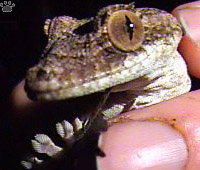
Uroplatus alluaudi, PN Montagne d'Ambre.
Madagascar - Part 6
Lemurs are not the only magic creatures on Madagascar. The more time you spend in these forests, the more like a fairy tale it feels. Your connection to the real world gets finally severed when you find your first flat-tailed gecko (Uroplatus).
 |
 |
| U. alluaudi, Parc National Montagne d'Ambre. |
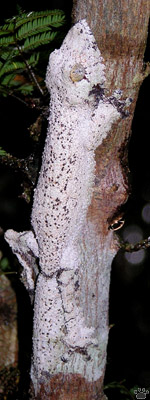
U. fimbriatus,
Parc National Masoala. |
Flat-tailed geckos are common in most of the island forests. All are perfectly camouflaged.
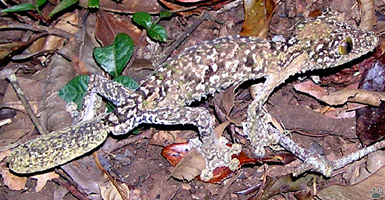 U. phantasticus, Parc National Andasibe-Mantadia.
U. phantasticus, Parc National Andasibe-Mantadia.
Photos here were taken with a flash, so the geckos stand out a bit. In natural light they are much more difficult to see.

U. henkeli, Parc National Marojejy.
They spend days hugging tree trunks or twigs, but during the night you can often find them as they explore thin branches. |

U. fimbriatus,
Parc National Masoala. |
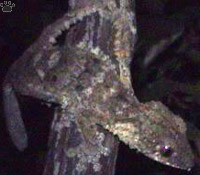 |
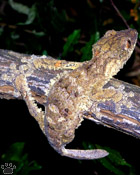 |
 |
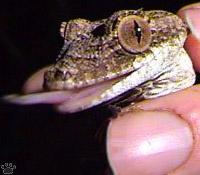 |
| U. guentheri, Parc National d'Ankarana. |
U. alluaudi, Parc National Montagne d'Ambre. |
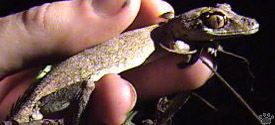
U. henkeli, Parc National Marojejy. |
Identifying them is difficult, because all eleven species are very variable, and can change color to blend into whatever they are hiding on. |
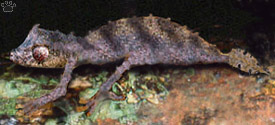
U. ebonui, Parc National Marojejy |
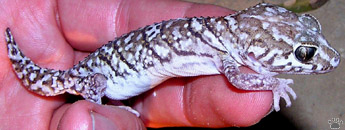 |
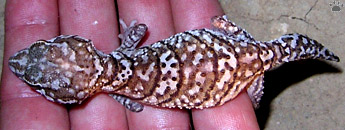 |
| Paroedura bastardi, Reniala Nature Reserve. |
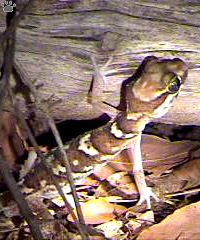
P. picta, Parc National d'Ankarana. |
Ground geckos (Paroedura) mostly live on the forest floor in places with plenty of leaf litter.
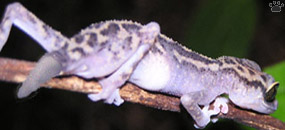
P. picta with re-growing tail and an egg inside, Ifaty.
There are sixteen species, some completely terrestrial, some more or less arboreal. |
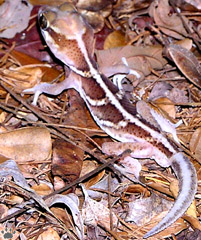
P. picta, Parc National d'Ankarafantsika. |
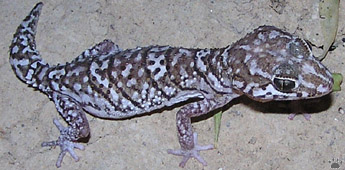 |
 |
| Paroedura bastardi, left - Reniala Nature Reserve, right - Toliara. |
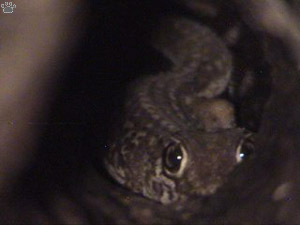
P. stumpi in a hollow tree, PN Montagne d'Ambre. |
Ground geckos are quiet, shy, very delicate creatures. Their semitransparent skin is thin and easily damaged. Their tails possibly serve for storing fat, but they easily break off. A broken tail keeps moving for a few minutes. As in most other lizards, it can re-grow, but only once. |
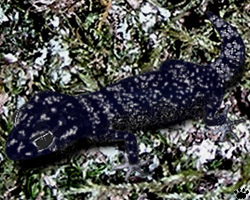
P. masobe, Parc National Marojejy |
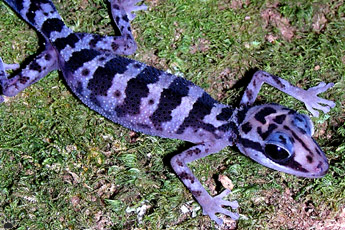 |
 |
| Paroedura sp. (possibly P. gracilis or an undescribed species), Parc National Masoala. |
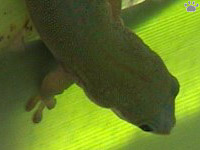
Phelsuma dubia under a leaf, PN L'Isalo. |
Day geckos (Phelsuma) are the best-known Madagascar reptiles. Americans see one daily in TV commercials for Geico Insurance. They can be active anytime, but usually hide under leaves if the weather is too hot or too cold. In such times, they can be lured out with pieces of banana put out nearby - apparently, they have very good sense of smell. |
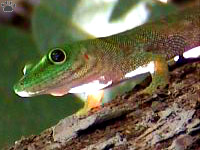
Ph. flavigularis, PN Andasibe-Mantadia. |

Ph. quadriocellata eating a piece of banana, Parc National Ranomafana. |
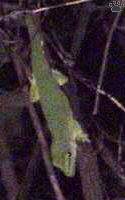
Ph. guttata, PN L'Ankarana. |
Because island ecosystems are usually more simple than continental ones, island plants and animals often can't compete with invasive species. Almost every island on Earth have suffered mass extinctions when people introduced cats, dogs, rats, mice, weeds, wasps, ants, pigs, and other "aliens". But it's very unusual for an island species to successfully colonize a continent. Madagascar seems to be an exception - truly a tiny continent. Its ecosystem is so ancient and complex that its wildlife can successfully colonize other islands and even continents. Some local birds have colonized East Africa. Day geckos went further: they are now widespread in Africa and on most Indian Ocean islands. I suspect that chameleons are also of Madagascar origin. |
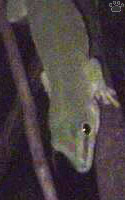
Ph. guttata, PN L'Ankarana. |

Ph. madagascarensis, Parc National Marojejy. |
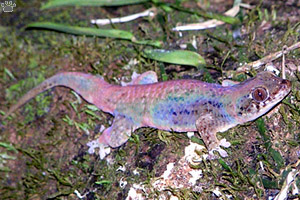
Geckolepis sp., Kirindi FR. |
Most day geckos are very colorful, but it doesn't mean they are always easy to find. Like most geckos, they can become very tame. |
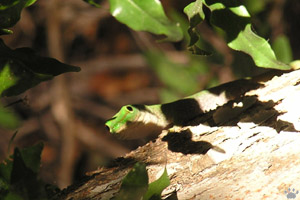
Ph. guimbeaui, Parc National Marojejy |
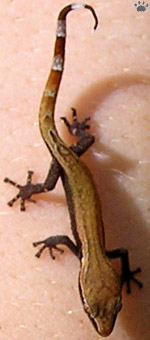
Ebenavia inunguis,
Parc National Marojejy. |

Beaded gecko (Geckolepis maculata), Parc National d'Ankarafantsika.
Altogether, Madagascar has over a hundred species of geckos (10% of the World list), from tiny Ebenavia (left) to giant Blaesodactylus (right), which can grow to 40 cm in length. Some of them, especially in large genus Lygodactylus, haven't been seen since discovery. Many species are polymorPh. ic, and will probably be split in the future. I won't be surprised if the actual number is 200 or 300. It is not unusual to see 5-10 species in one night - a lot of fun if you are interested in herpetology.
|
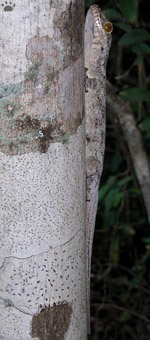
Blaesodactylus sakalava,
Parc National L'Ankarana. |
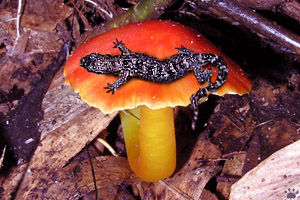
Salamander gecko (Matoatoa brevipes), PN Masoala. |
Part 7: Chameleons
Back to Part 5
Home
|